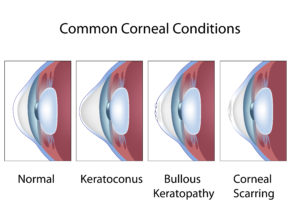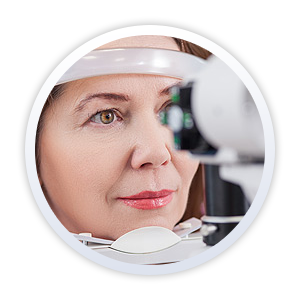The cornea is a transparent series of membranes located in the front of the eye in front of the colored part of the eye (the iris). Although the cornea is a complex series of tissues, it lacks blood vessels. Because of its location and composition, the cornea is subject to damage from foreign bodies, and invasion by bacterial and viral infections, including herpes infections.

The cornea has many functions. It not only serves as a barrier (along with the eyelids) to protect the eye, it also plays an important part in focusing light that is entering the eye. Working in conjunction with the lens of the eye, light is ultimately refracted onto the retina to begin the vision process. The cornea also serves to protect the inner parts of the eye from the harmful UV rays of the sun.
Some of the more common conditions that affect the cornea include scratches, allergies, keratitis (inflammation), and dry eye syndrome. Corneal dystrophies are diseases that are typically inherited, affect both eyes, and progress gradually. These diseases include keratoconus, lattice dystrophy, Fuch’s dystrophy, and epithelial basement membrane dystrophy. These diseases can cause a variety of symptoms including intermittent pain with permanent vision loss, while others may cause no visual disturbances and may go undiagnosed for years.
Treatment for corneal issues can range from simple medications such as eyedrops, to specialty contact lenses and even surgery for advanced corneal disease. In the most advanced cases, a corneal transplant may be indicated. Patients with corneal disease or potential corneal issues should consult their ophthalmologist for further evaluation and treatment. Some conditions may require a referral to a cornea specialist, an ophthalmologist with additional training in the diagnosis and treatment of corneal disease.





